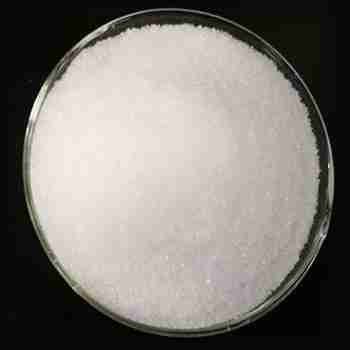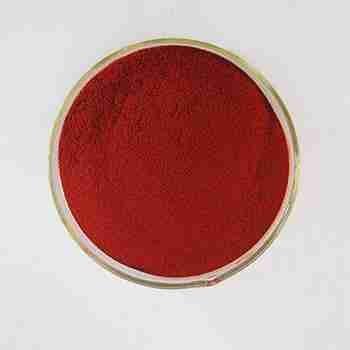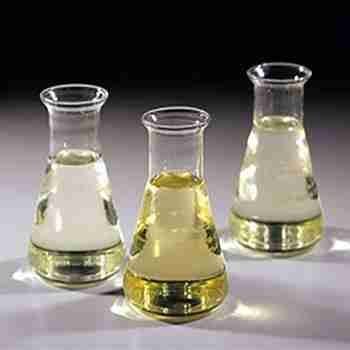Adenosine CAS 58-61-7
Assay: 99%-101%
Appearance: White powder
Package: 25kg/drum
Capability: 200MT/year
Sample: Available
related documents:
COA of Adenosine 58-61-7
Request for product documents
发送询盘
Description
Adenosine Quick?Details
Chemical Name: Adenosine
CAS No.: 58-61-7
Molecular Formula: C10H13N5O4
Molecular Weight??267.24
Appearance: White powder
Adenosine Typical Properties
Item
Standard
Assay
99%-101%
Identification
IR spectrum should match that of the working standard
Melting point
223-238 ??
???????? Specific rotation
-68??-72??
Loss on drying
?Q0.5%
Residue on ignition
?Q0.1%
Heavy metals
?Q10ppm
Acidity or alkalinity
??????? Meet the requirements
Limit of Ammonia
??Q0.0004
Limit of chloride
??Q0.007%
Limit of sulfate
??Q0.02%
Total of impurities ?Q0.5%
Guanosine ?Q0.1%
Inosine ?Q0.1%
Uridine?Q0.1%
Adenine ?Q0.2%
?
Adenosine Usage
1. Antiarrhythmic drugs can make paroxysmal supraventricular tachycardia into sinus rhythm. Used for supraventricular arrhythmias associated with atrioventricular.
2. Antiviral drug.
3. The pharmaceutical industry is mainly used for the production of adenosine arabine and adenosine triphosphate; Coenzyme and its series products are the main raw materials of drugs such as cyclic adenosine phosphate.
4. For the production of ATP, adenosine arabine, coenzyme A.
5. Treatment of angina pectoris, myocardial infarction, coronary insufficiency, arteriosclerosis, essential hypertension, cerebrovascular disorders, sequelae of stroke, progressive muscular atrophy, etc
6. Endogenous neurotransmitters.
7. Adenosine-induced apoptosis of hL-60 cells in human leukemia. It also has anti-arrhythmia properties. A neurotransmitter, adenosine A receptor in all subtypes, ACTS is the preferred endogenous agonist.
Adenosine Packaging and Shipping
Packing: 25kg/drum
Adenosine Storage
Ventilated low-temperature drying warehouse; Store separately from food ingredients.
| 5 |
|
0 |
| 4 |
|
0 |
| 3 |
|
0 |
| 2 |
|
0 |
| 1 |
|
0 |
- 2
- 2-diallylpent-4-en-1-amine
- 4
- 95-16-9
- Ammonium sulfamate
- Benzothiazole
- cas:67889-00-3ح2
- cas:83524-75-8 | pigment black 32
- cas:928836-00-4 | 2
- cas:932745-70-5 | 4
- Chemical Minerals
- Coconut diethanolamide
- Daily Chemicals
- discount
- for sale
- General pvc resin
- hexyl D-glucoside
- in stock
- Lauramidopropyl betaine
- LAURIC ACID MONOETHANOLAMIDE
- Petroleum Additives
- Plasticiser
- Ploymers
- price
- PVC
- quotation
- Raw Materal
- Remove term: Petroleum Additives Petroleum Additive
- SODIUM ETHYL 2-SULFOLAURATE
Related Products
Chemical Name: N-Acetyl-D-mannosamine
Cas: 7772-94-3
MF: C8H15NO6
MW: 221.21
Appearance: White to off-white powder
Chemical Name: Dehydrocholic acid
Synonyms: Acide dehydrocholique; Triketocholanic acid
CAS No.: 81-23-2
Molecular Formula: C24H34O5
Molecular Weight: 402.53
Appearance: Powder
L-arginine (or arginine) is an amino acid that is recognized to be the ??building blocks?? of healthy proteins.?We get arginine from our diet plan, especially from animal-derived healthy protein foods, consisting of beef and various other sorts of red meat, chicken, fish, eggs, and also dairy items.
In addition to being normally present in a ??entire healthy protein?? that gives all the important amino acids we need, it is also produced in a research laboratory setting so it can be made use of to develop supplements that benefit heart health, sports efficiency, psychological performance, as well as extra.
Chemical Name: STODDARD SOLVENT
CAS No.: 64742-88-7
Appearance: Colorless or Light Yellow Liquid
Polyglutamic acid (CAS 25513-46-6) is usually in the form of white powder.
Polyglutamic acid is a high molecular compound with good water solubility and biocompatibility.
It has many excellent properties, such as water retention, plant growth promotion, and improved fertilizer utilization. In the agricultural field, it can be used as a fertilizer enhancer, water retainer, etc., which helps to improve the fertility and water retention capacity of the soil and promote the growth and development of crops. For example, adding it to fertilizer can reduce fertilizer loss and improve the effect of fertilizer.
In the field of cosmetics, polyglutamic acid is also used, because its moisturizing properties can be used in skin care products.
Chemical Name: 3-Hydroxybutyric acid
CAS No.: 625-71-8
Molecular Formula: C4H8O3
Molecular Weight: 104.1
Appearance: White powder
Chemical Name: Quercetin-3-O-sophoroside
CAS No.: 18609-17-1
Molecular Formula: C27H30O17
Molecular Weight: 626.52
Chemical Name: Potassium Castorate
CAS No.: 8013-05-6
Molecular Formula: C57H107K3O12
Molecular Weight: 1101.74718
Appearance: Yellow Liquid
Product name:HYDROXYPROPYL GUAR HYDROXYPROPYLTRIMONIUM CHLORIDE
Purity:99%
Appearance:Light Yellow Powder
Package:Customized according to customer needs.
Sample:Available
Chemical Name: o-Xylene
Synonyms: 1,2-Dimethylbenzene; ortho-xylene
CAS No.: 95-47-6
Molecular Formula: C8H10
Molecular Weight: 106.17
Copper acetate peptide, also known as blue copper peptide. Copper peptide, also known as tripeptide in Chinese; Glycyl-L-histomyl-L-lysine. Peptide is a small molecule protein composed of amino acids, which are more easily absorbed by the skin and have more significant effects. It was first isolated from human plasma in 1973 and was discovered to have wound repair function in 1985. In 1999, researchers believed that copper peptide and its copper repair products can serve as activators of tissue remodeling, and it is also a signaling peptide, Promote the degradation of a large amount of collagen aggregates outside scars, the synthesis of normal collagen in the skin, the generation of elastin, proteoglycans, and glucosamine glycans, the growth rate and migration of different cell types, anti-inflammatory, and antioxidant responses.
Product name:Cyclopentane
Purity:96%
Appearance:White powder
Package:25kg/bag
Sample:Available



















Reviews
There are no reviews yet.